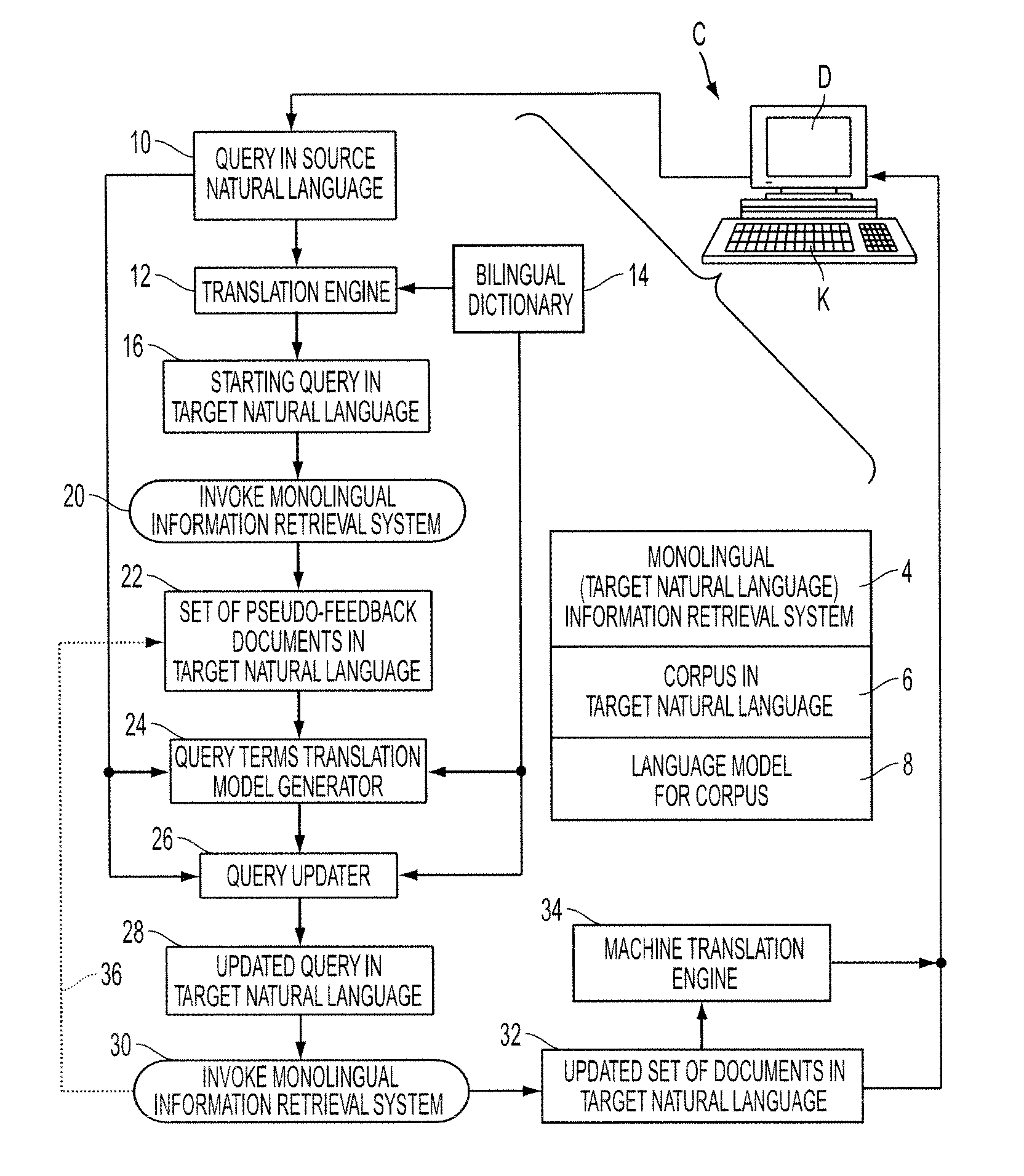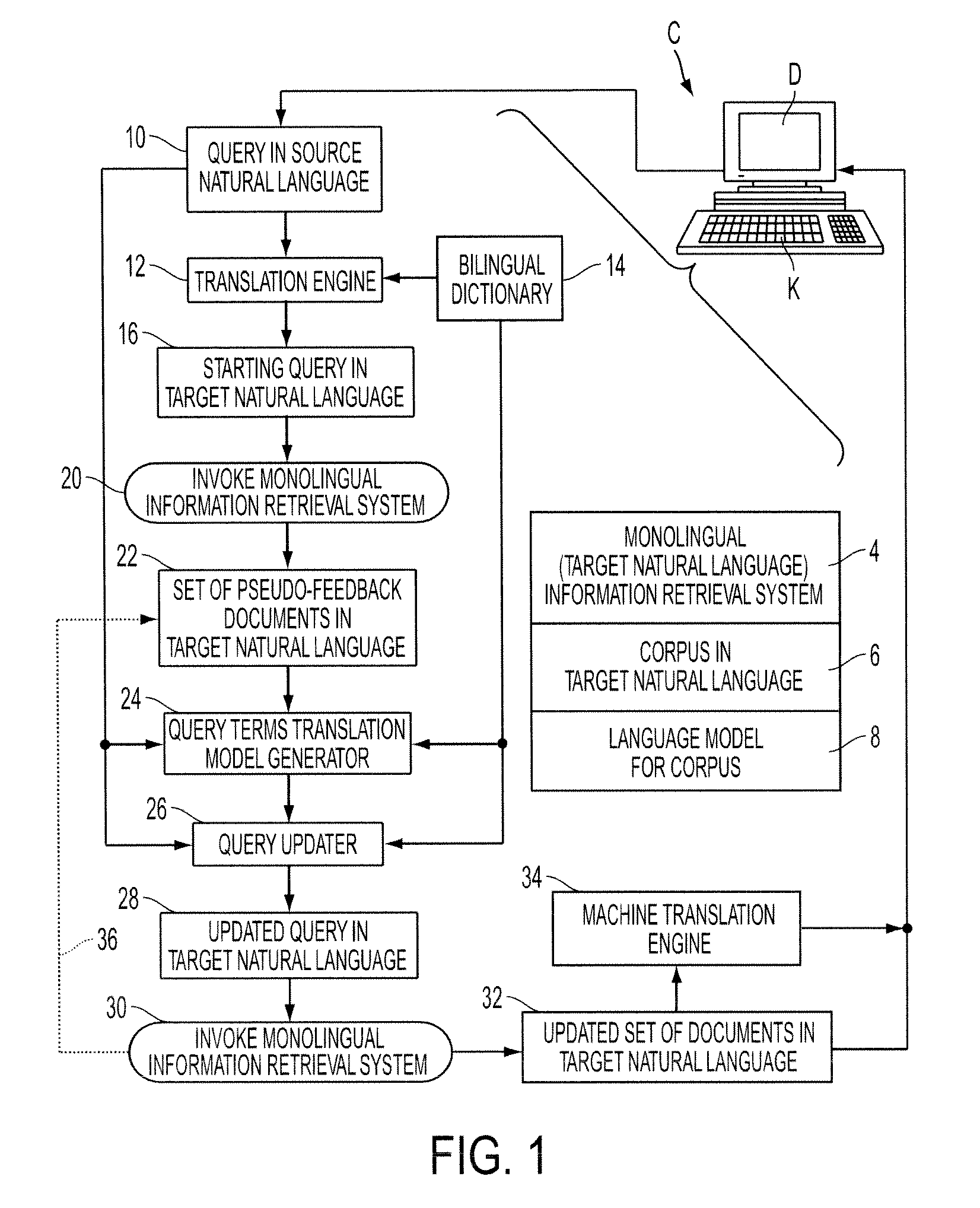Query translation through dictionary adaptation
a technology of query translation and dictionary, applied in the field of query translation through dictionary adaptation, can solve the problems of automatic generation of dictionaries that cannot contain errors, cannot facilitate ranking, and have no mechanism by which they can be relatively ranked
- Summary
- Abstract
- Description
- Claims
- Application Information
AI Technical Summary
Benefits of technology
Problems solved by technology
Method used
Image
Examples
Embodiment Construction
[0018]With reference to FIG. 1, a cross-lingual information retrieval system is constructed based on a monolingual information retrieval system 4 that retrieves information from a monolingual corpus 6 containing documents in a target natural language. As used herein, the term “document” is intended to encompass any information collection or grouping that includes at least some text in a natural language, such documents including but not limited to: word processing documents or portions thereof; text-searchable PDF documents or portions thereof; XML documents or portions thereof; HTML documents or portions thereof; spreadsheet documents or portions thereof; presentation documents or portions thereof; electronic mail (email) messages; or so forth. The documents in the monolingual corpus 6 include text in the target natural language.
[0019]The monolingual corpus 6 may be a standalone corpus containing only documents in the target language. For example, if the target language is French, ...
PUM
 Login to View More
Login to View More Abstract
Description
Claims
Application Information
 Login to View More
Login to View More - R&D
- Intellectual Property
- Life Sciences
- Materials
- Tech Scout
- Unparalleled Data Quality
- Higher Quality Content
- 60% Fewer Hallucinations
Browse by: Latest US Patents, China's latest patents, Technical Efficacy Thesaurus, Application Domain, Technology Topic, Popular Technical Reports.
© 2025 PatSnap. All rights reserved.Legal|Privacy policy|Modern Slavery Act Transparency Statement|Sitemap|About US| Contact US: help@patsnap.com



